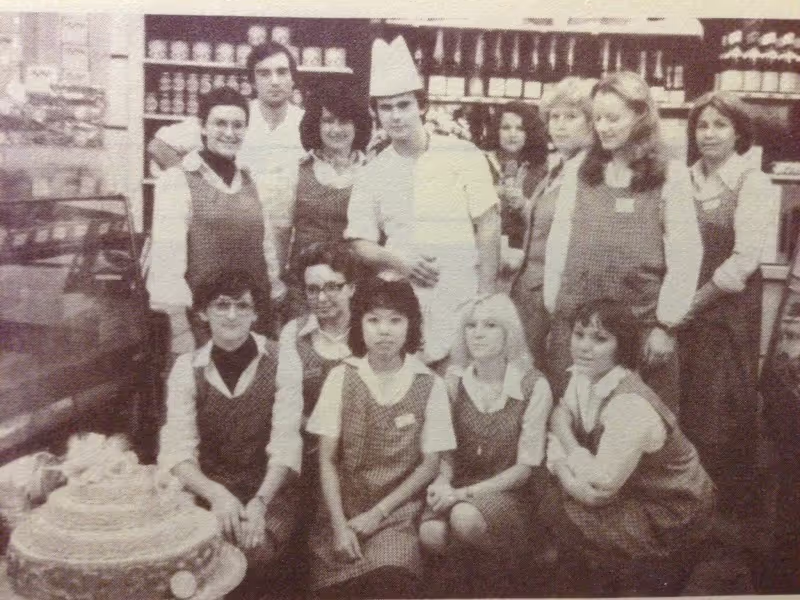%20Gilles%20Leimdorfer.avif)
Pierre Hermé transformed pastry into an art form, reinventing its codes with bold creations and presentations worthy of haute couture. A visionary, he revolutionized the macaron with unprecedented flavor pairings such as the Ispahan, and built a worldwide reputation by turning indulgence into a true philosophy. From Fauchon to his international boutiques, he elevated dessert to the status of culture and innovation.

A triangular pillar of dacquoise and praline, crowned with a cherry. Five golden stripes running down milk chocolate. Designer Yan Pennor's conceived it; Pierre Hermé made it real. When the Alsatian pastry chef unveiled this creation at Fauchon on Place de la Madeleine in 1993, Paris stopped to look. An instant sensation—not because it was sweet, but because it was a statement.
If anyone embodies the rise of the pastry chef from artisan to artist, it is Hermé. Born into the trade—the fourth generation of confectioners in his family, son of the renowned Georges Hermé—his childhood memories are built from hours spent in his father's bakery, watching sugar become architecture. At fourteen, Gaston Lenôtre extended an opportunity. Six years of apprenticeship followed. Hermé advanced rapidly: sous-chef, then head pastry chef at a Parisian boutique. Then eleven years at Fauchon, where the real transformation began.

Hermé's debut was nothing short of theatrical. Twice a year, he staged dessert collections like fashion shows—"Kawai," "Désirs"—unveiling creations as if they were haute couture. When he presented a dessert spectacle at the Crazy Horse cabaret, with slender models displaying his confections, culinary Paris erupted in debate. Was this art or provocation? Both, perhaps.
His creations carry names like poems: "Mr. H. Mogador" is a lemon cookie crowned with passion fruit jelly, shaped like a lollipop. "Instant" appears as a dark inverted cone filled with Earl Grey jelly. Each piece asks to be contemplated before it is consumed.
Marie-Antoine Carême, that luminary of French gastronomy, once declared: "There are five fine arts—painting, sculpture, poetry, music, and architecture—with pastry as the foremost expression." Hermé's work makes the case concrete.

In 1997, Hermé turned his attention to the macaron. First at Ladurée, then in his own ateliers, he reimagined the delicate sandwich cookie, reducing its sweetness and pioneering new flavor combinations. The Ispahan—rose, raspberry, and lychee—became his signature, a trinity of taste that proved pastry could be both sensual and subtle.
The accolades accumulated. The Guardian called him "the king of contemporary pastry." L'Express dubbed him "the Paganini of desserts." But it was Jeffrey Steingarten, food critic for Vogue USA, who gave him the title that stuck: "The Picasso of Pastry." Not just for his skill, but for his vision—a relentless pursuit of sublime flavors and textures, minimalist aesthetics, premium ingredients.
The brand expanded across continents: Tokyo first, then Doha, Jeddah, Bangkok. Each boutique became a pilgrimage site for those who understood that pastry could be more than pleasure—it could be philosophy.
Hermé never stopped thinking. "I've always thought of sugar as a seasoning," he told Ouest-France. "The right amount must be added. Good cakes can be made with less sugar." He developed a range with thirty percent fewer calories—"reasoned gourmandise," he called it. Vegan pastries followed. "Taking into account the new eating habits of consumers is essential to creation because they represent the future."
The macarons, he noted with satisfaction, were naturally gluten-free. Evolution without compromise.
%20Laurent%20Fau.avif)
For thirty years, he has been writing reference books—compiling recipes from his entire career. PH10, originally priced at 130 euros, now commands pride of place on coffee tables: 575 pages that sit alongside prestigious works of art and architecture. The message is clear: modern pastry is not decoration to food culture. It is a cornerstone.
Hermé transcends the traditional pastry chef. He is an innovator who proved that the sweet course could carry the same weight as any savory dish, that sugar could be wielded with the precision of salt, that a dessert could make you think before it made you smile.
From that first triangular pillar at Fauchon to the global empire of refined pleasure, Pierre Hermé built something unprecedented: a kingdom where taste rules, where every creation is an argument, and where the pastry chef stands not in the kitchen's shadow, but in its spotlight.
*“The Picasso of Pastry” was a famous quote by Jeffrey Steingarten